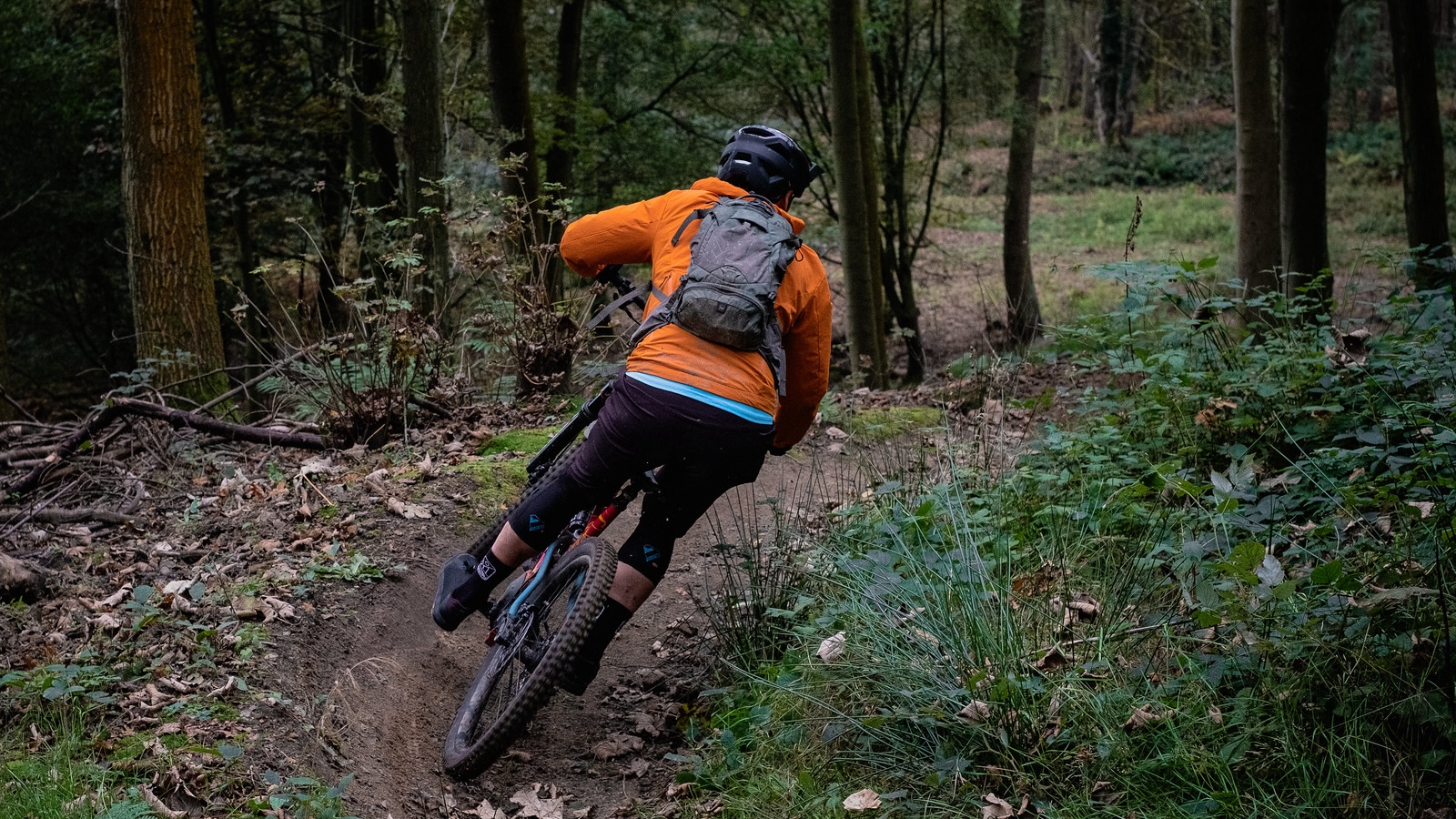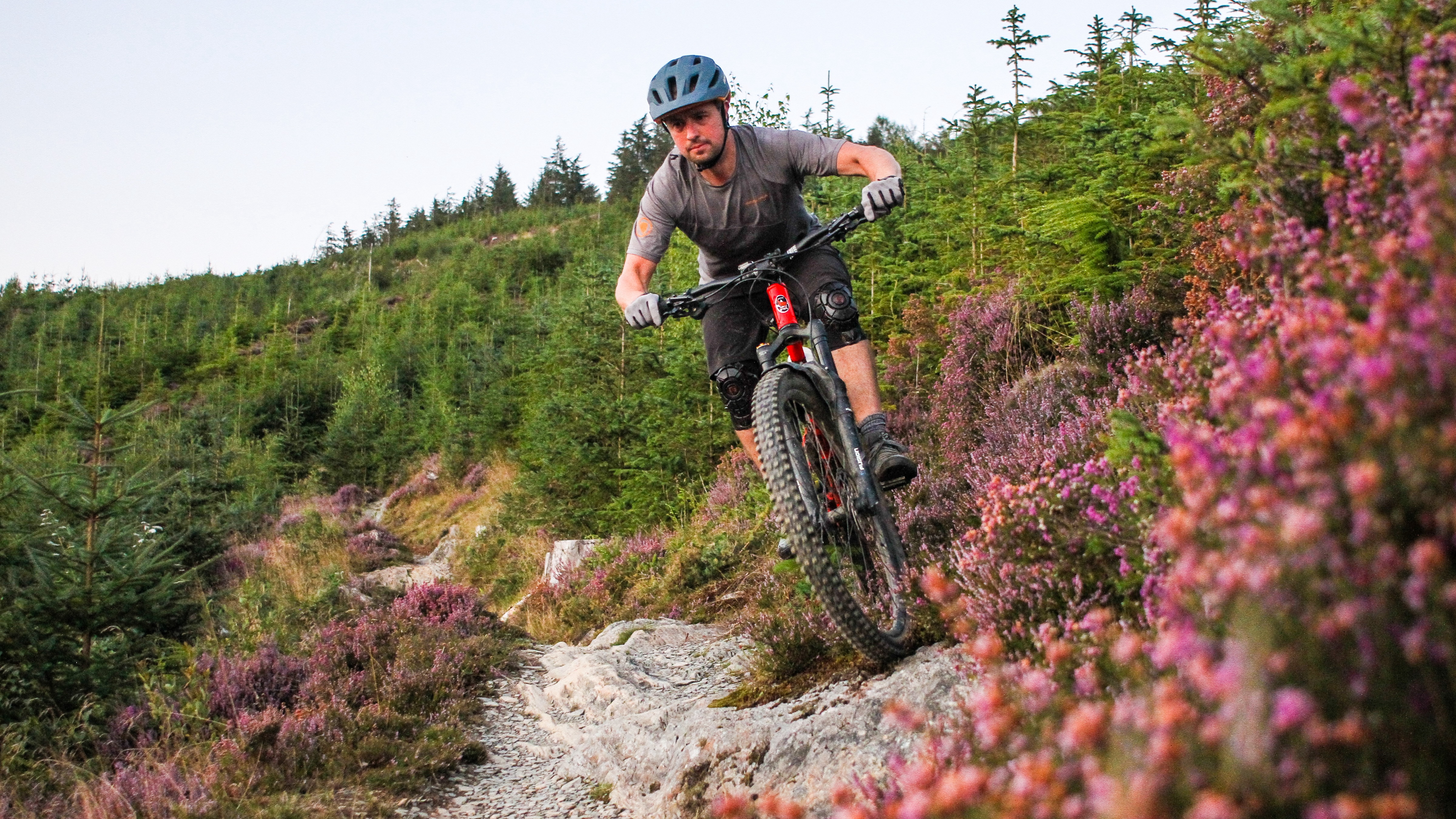Bespoken Word – Does riding illegal singletrack and unsanctioned trails make you an MTB criminal?
Guy Kesteven rides illegal trails all the time and he knows he’s not alone. The whole question of unsanctioned trail use is stepping up a level officially though, so what happens next?

My name is Guy Kesteven and I’m a criminal. I know that I’m legally allowed to ride bridlepaths, RUPPs and some other rights of way on my mountain bike as well as official trail center trails. And for a lot of the time that’s exactly what I do – especially if there’s a big chance that I’ll end up on the potentially smoky end of a shotgun or a furious mouthful from a gamekeeper/farmer/forester.
If I think I can get away with it though, I’ll ride footpaths, random singletrack and unsanctioned built trails. In fact, thinking about my rides this week, only Sunday’s ride was totally legal. Tuesday was all on unsanctioned trails, Wednesday was a mix of footpaths, fire roads and dog walking paths in the local woods, and last night was mostly legal bridleway, but also included moorland tracks with a sneaky extra bit of stream side singletrack. I’m not showing off here; it’s not something I’m particularly proud of it, but I’m not going to pretend I don’t do it either. Simply because a lot of the best and most easily accessed riding in the UK is illegal and it always has been since I was wobbling about in the woods as a little kid.

What's the problem?
While it might not be legal, lots of the wild trails – like the 19th century mining tracks we rode last night, or the fire roads I rode on Wednesday – are totally sustainable for bike traffic. The trails I was riding on Tuesday are immaculately crafted for maximum flow without sniper stump hazards and they’re positioned for minimum impact with other users too.
I like to think I ride responsibly too. I’m all about the ‘Be Nice, Say Hi’ vibe. I pull over rather than pushing past. I stop and pet dogs, smile sweetly and try and pre-empt any ‘problem chats’ with a cheery conversation about the weather or something similarly English. I don’t ride popular paths when it’s likely to be busy. I shut gates, I don't harass farm animals. I don’t ride sensitive trails when they’re soggy and I do a bit of maintenance to stop any issues getting out of hand. I don’t give away locations of anything ‘cheeky’ that might end up on social media either. That puts me ahead of freeride legend Remy Metalier who had a serious run-in with the US Bureau of Land Management after ‘busting the crust’ on sensitive soils in Utah last year on a video that got 90 million views.
I even did a ‘how to ride responsibly’ video on YouTube that got me a pat on the back from the local Forest Enterprise wardens. In fact, they subsequently asked me to keep a weather eye on unsanctioned trails I ride regularly but they can’t visit often to check nothing dangerous or obviously conflicting is being created.

Going forward
And that’s a personal insight into what looks to be a significant shift in the way we can interact with land managers and land owners on a national level in the UK. DMBinS – which has done incredible work with trail creation and consolidation north of the border – has just announced the appointment of a SRAM-funded UK Trails Project Manager to essentially act as a go-between for trail build groups and landowners. There’ll be an official announcement on this next month, but if you’re familiar with the excellent work that’s been done around the Dyfi area by Dave from Bike Corris you’ll be stoked to hear it’s him in the role. This is designed to progress the excellent work already being done with well-established discussions between groups on both sides of the situation all over the country. There are some great examples of where this can lead eventually too, not just in the Tweed valley but also places like Rogate bike park where unsanctioned trails have been turned into a fantastic official resource.
Getting some sort of handle on the situation seems even more important as increasing numbers of riders get into the sport – many having started by riding local ‘cheeky’ trails during lockdown. That’s where I think we all have a really important part to play too. If you’ve got the time then getting in touch with your local trail group – or setting one up if it doesn’t exist – will literally put you on the map to progress getting local riding recognised. But self-policing our community when we’re riding is also extremely valuable, whether that’s maintaining trails, picking up litter, or sorting out potential conflict points (eg, trails that fire riders out onto busy paths at high speed, or damage SSSIs or historic sites). Trying to educate other riders on how to play nicely before we have our playgrounds taken away is absolutely vital too. Because, as Kieran Foster – National Off Road Advisor for Cycling UK – told me when we were chatting earlier, “It’s all very well saying ‘Don’t be a (insert genitals of choice here)', but a lot of riders don’t know when they’re behaving that way. It's up to us to be responsible, reasonable and put a positive case forward for better access and for getting existing trails accepted."

Guy Kesteven has been working on Bike Perfect since its launch in 2019. He started writing and testing for bike mags in 1996. Since then he’s written several million words about several thousand test bikes and a ridiculous amount of riding gear. He’s also penned a handful of bike-related books and he reviews MTBs over on YouTube.
Current rides: Cervelo ZFS-5, Specialized Chisel, custom Nicolai enduro tandem, Landescape/Swallow custom gravel tandem
Height: 180cm
Weight: 69kg
